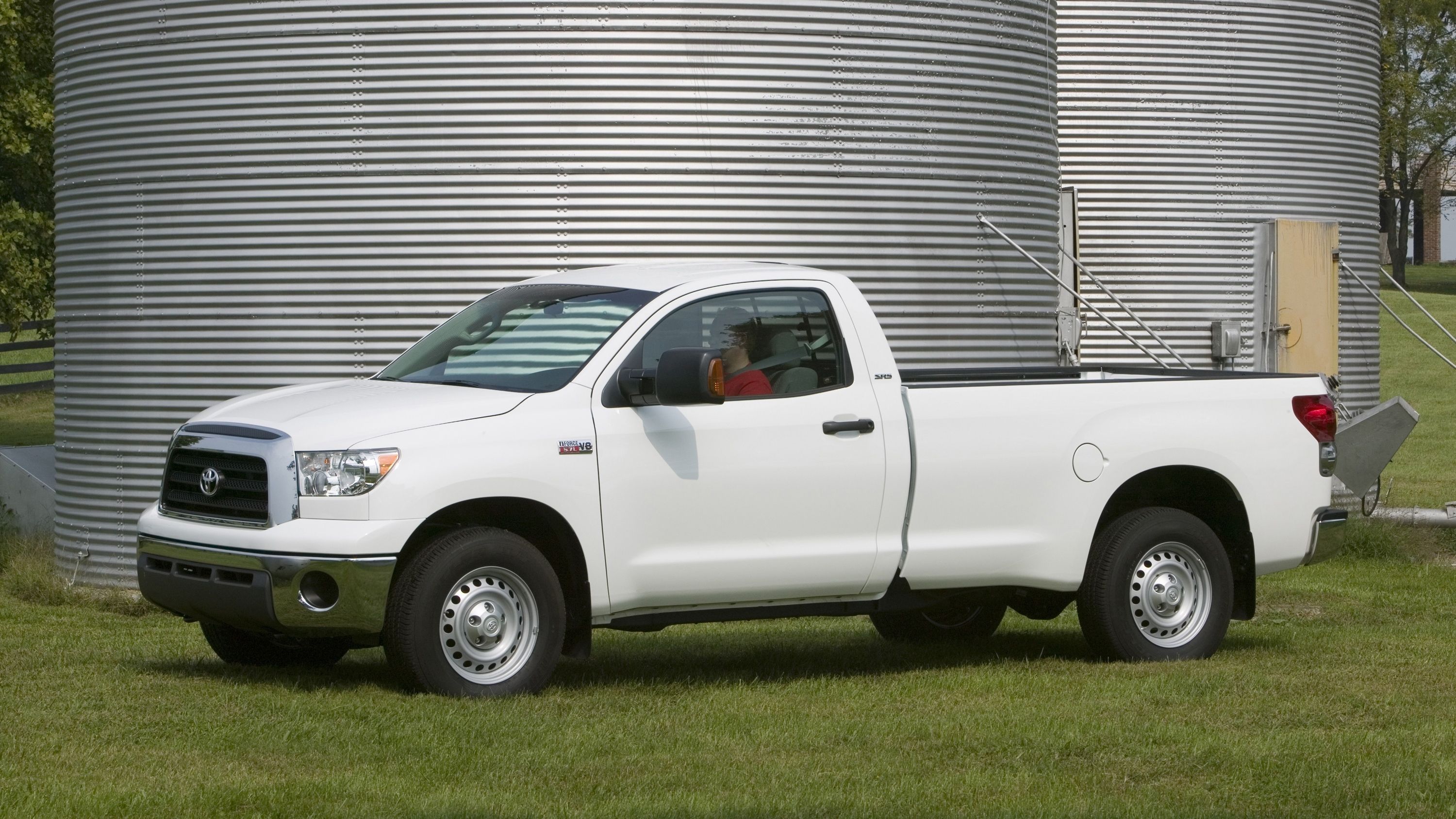Amid Toyota’s February 2017 debut of the slightly updated 2018 Tundra pickup, the brand buried its plot to end production of the Tundra regular cab. The once-popular cab style has faded from glory as customers choose pickups versions with more interior room. As it turns out, the regular cab Tundra only mustered an abysmally low 0.4 percent rake-rate in the first five months of 2017. The larger Double Cab accounted for 34.1 percent of Tundra sales during the same period, while the Crew Max represented 65.5 percent of the 43,809 Tundras sold between January and May. Do the math, and Toyota only sold 175 regular cab Tundras in five months.
This isn’t a new trend, of course, with regular cab trucks from every automaker losing out to more spacious cab configurations. It’s also worth noting Toyota trails in half-ton pickup truck sales, followed only by the new Nissan Titan and Titan XD pickups, whose production is still being ramped up following their recent introductions. In contrast, Ford sold 351,965 F-Series pickups between January and May, while Chevrolet sold 212,425. The domestic brands also control the vast majority of the fleet and work-truck segments, which still skew towards low-cost trims and cab configurations. That presents this question: Why isn’t Toyota marketing to these segments? Other automakers do very well selling high-quantity, low-content pickups, Ford especially. Let’s explore this more below.
Continue reading for more information and opinion.
Goodbye, Regular Cab
It’s hard to argue for keeping such a low-volume variant of a product. 175 out of 43,809? That’s laughable. So, it’s difficult to blame Toyota for pulling the regular cab option for 2018. Then again, it seems like more could have been done to save it. As PickupTrucks.com points out, Toyota would have been smart to capitalize on the 2018 Tundra’s new TRD Sport trim by offering a street performance package with upgraded suspension and the resurrection of the TRD supercharger for the 5.7-liter i-Force V-8. Think of it as a modern-day Ford F-150 Lightning or Chevrolet C/K 1500 454SS. Sure, the off-road segment is hot these days, with the F-150 Raptor and now the Chevrolet Colorado ZR2 stealing headlines. But being different is also hot. Perhaps Toyota could have reenergized the street truck segment.
Yet here we are – the 2018 Toyota Tundra soldiers on basically unchanged since its 2007 introduction. A refresh in 2014 brought a new face and interior, but the bones have carried over. The only changes for 2018 include a minuscule update to the grille, a slightly reworked gauge cluster, and the addition of Toyota Safety Sense+, the automaker’s active safety system suite. That’s it. The 5.7-liter and six-speed automatic remain the same, the frame and suspension remain the same, and the payload and towing numbers stay the same. Progress is certainly absent from the Tundra these days.
How can this be fixed? Toyota needs to thoroughly update the Tundra – like a true lugnuts-up update. Second, Toyota needs to increase its marketing budget for the Tundra. Show the truck working on a construction site and advertise about reliability. Show the Tundra Platinum towing a nice boat and convince people Ford, Chevy, and Ram aren’t the only trucks out there. Cater to the fleet market by offering dealer add-ons and upfit options. Third, Toyota must increase the Tundra’s production numbers. Toyota says its San Antonio assembly plant is at 100-percent capacity building both the Tundra and Tacoma pickups. Well, expand the plant or build a second location. Figure something out. At this point, the poor Tundra just feels like the red-headed step child no one inside Toyota wants to care for. Toyota’s brand reputation for reliability and survive-the-apocalypse indestructibility would play perfectly into selling its pickup lineup. That’s already proven with the Tacoma. Why Toyota is seemingly refusing to apply this to a more expensive, higher-profit truck is beyond me.
But that’s just my opinion. Let me know what you think in the comments below.

